In a world that frequently enough feels chaotic and overwhelming, the quest for tranquility can lead us to seek harmony within our own living spaces. Enter shoji screens—a timeless element of Japanese design that transcends mere functionality to embrace an ethos of serenity and balance. these delicate, sliding panels, traditionally crafted from wood and rice paper, have graced homes for centuries, serving not only as practical room dividers but also as elegant embodiments of the minimalist aesthetic. in this article, we will explore how integrating shoji screens into modern interiors can transform our environments into peaceful sanctuaries, blending beauty with purpose and inviting a sense of calm into our everyday lives. From their ancient meaning to contemporary applications, discover how these exquisite structures offer a unique opportunity to cultivate mindfulness and serenity within the spaces we inhabit.
Embracing the Calm Essence of Japanese Design Through Shoji Screens

Japanese design is renowned for its ability to create spaces that foster peace and tranquility, and one of the most essential elements that encapsulates this philosophy is the shoji screen. Traditionally made from rice paper and a delicate wooden frame, shoji screens serve as versatile dividers that gracefully filter natural light while maintaining a sense of openness. The minimalist aesthetic they offer enables a seamless flow between rooms, allowing for a harmonious connection with nature. By incorporating these elegant barriers into your living space, you can enhance the atmosphere of serenity, transforming any area into a haven of calm.
Utilizing shoji screens not only enhances interior aesthetics but also serves practical purposes, making them an ideal choice for modern living. They can illuminate spaces without overwhelming them, and their light nature allows for easy repositioning, providing flexibility in interior layout. Consider these benefits:
- Light Filtering: shoji screens gently diffuse sunlight, creating a soft glow.
- Space Optimization: Ideal for smaller areas,as they divide spaces without closing them off.
- Conventional Charm: They bring a touch of Japanese heritage into contemporary design.
Embracing this design element not only enhances your home’s style but also cultivates a peaceful living environment that encourages mindfulness and tranquility.
An Invitation to Minimalism: Aesthetic Appeal of Shoji Screens in Modern Homes
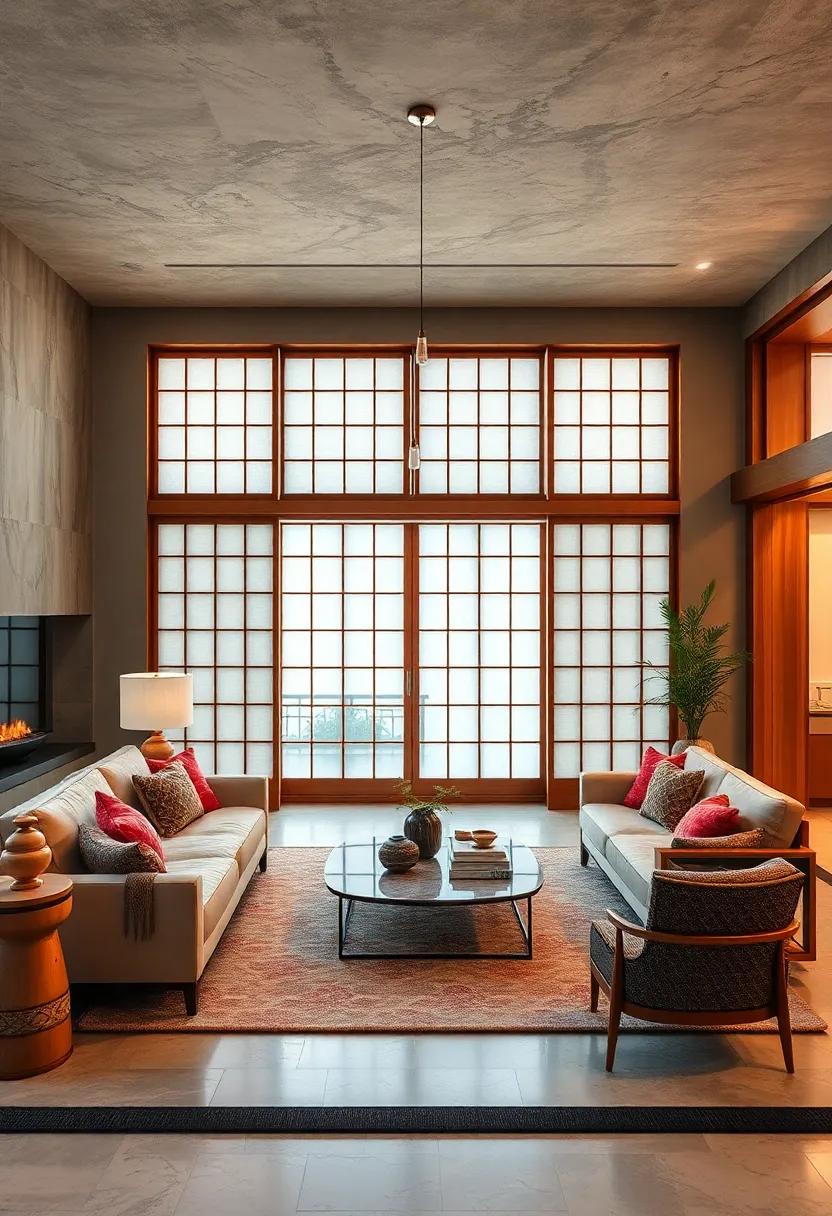
The timeless beauty of Shoji screens seamlessly merges function and aesthetics, offering a serene escape even in the chaos of modern life. crafted from delicate rice paper and lightweight wooden frames, these screens serve as an elegant boundary that allows light to filter through while maintaining privacy. Imbuing spaces with a sense of openness yet providing necessary delineation, Shoji screens create a harmonious environment that fosters calm. Their minimalist design resonates well with contemporary decor,effortlessly adapting to various styles from traditional Japanese to sleek modern aesthetics.
In addition to their visual appeal,Shoji screens also enhance the sensory experiance of a living space. The soft, diffused light they offer contributes to a warm, inviting atmosphere, ideal for meditation or quiet reflection. Incorporating Shoji screens into your home can also promote better association and flow, effectively creating dedicated areas for relaxation or productivity. Consider using them in spaces such as:
- Living Rooms: Create cozy alcoves for reading or informal gatherings.
- Home Offices: Distinguish workspaces for better focus and creativity.
- Bedrooms: Craft peaceful retreats that encourage rest and tranquility.
Captivating Light: How Shoji Screens Transform Ambient Spaces
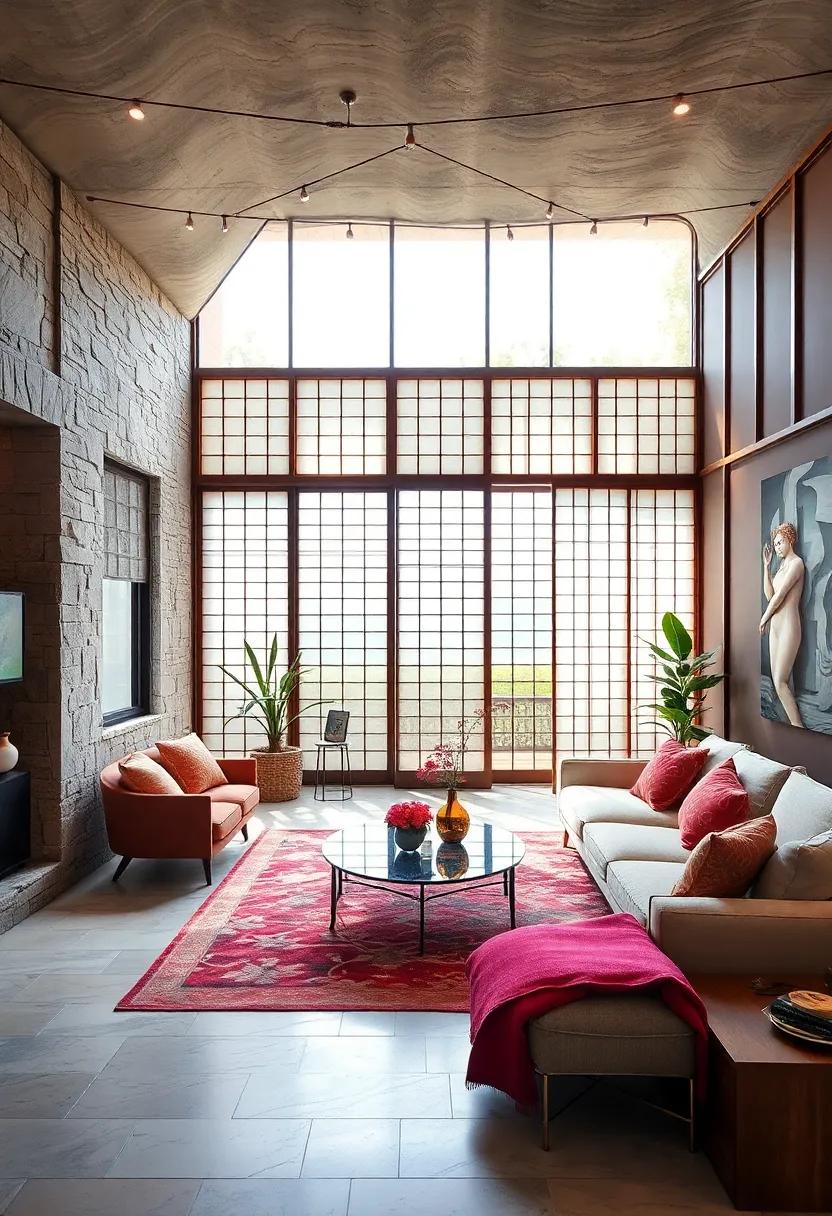
The soft glow that filters through Shoji screens transforms any room into an ambient oasis of tranquility. Traditionally made from lightweight timber frames and translucent rice paper,these elegant partitions not only provide privacy but also create a delicate interplay of light and shadow. When sunlight passes through, it casts intricate patterns, allowing a serene atmosphere to permeate your space. With versatile designs, Shoji screens can be utilized as room dividers, window treatments, or even to enhance outdoor areas by blending beautifully with nature.
The incorporation of shoji screens into your décor can work wonders in various settings, offering both functional and aesthetic benefits. To fully appreciate their versatility, consider the following features:
- Natural Light Regulation: Control how much light enters your space, promoting a calming environment.
- Space Definition: Create distinct areas in open-concept layouts without sacrificing flow.
- Minimalist Design: Their simple elegance complements various interior styles, from modern to traditional.
Harmonizing Nature with Interiors: The role of Shoji in Eco-Friendly Design
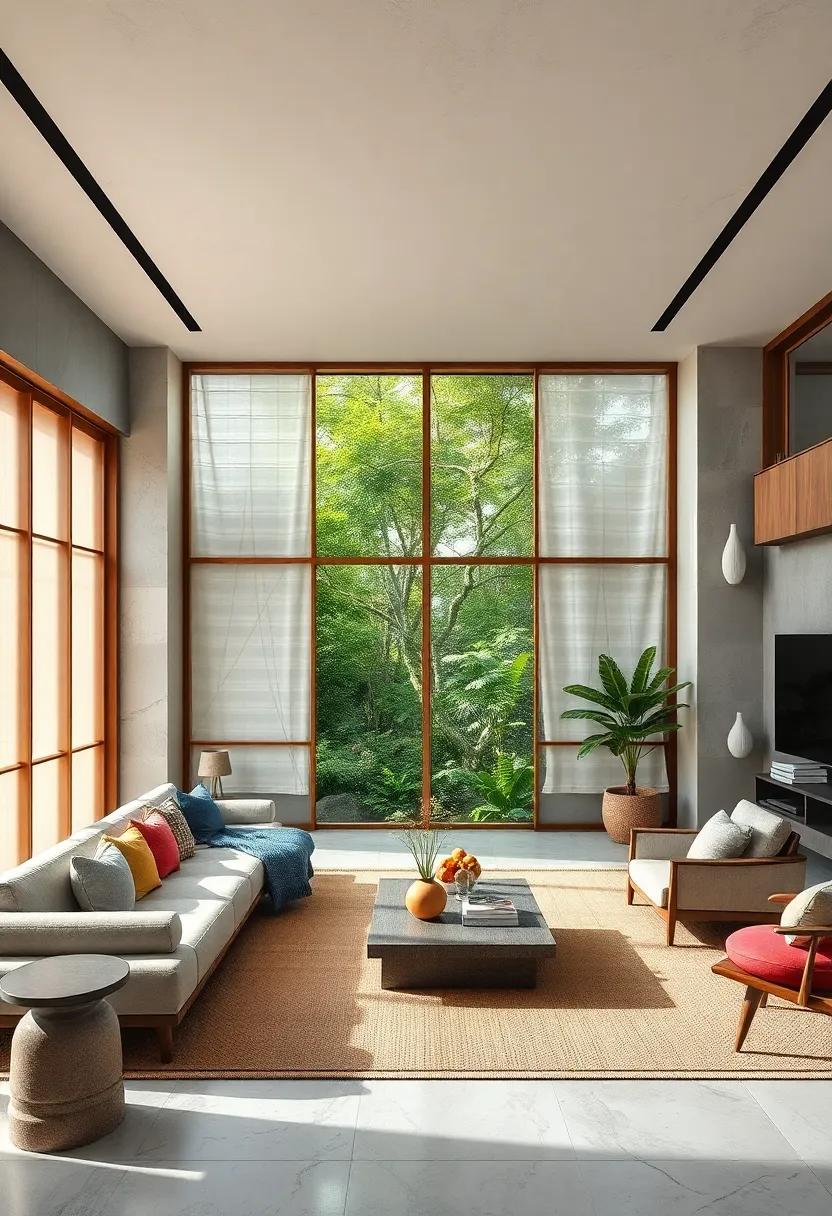
Incorporating traditional Japanese shoji screens into modern interior design not only enhances aesthetic appeal but also promotes lasting living. These beautifully crafted screens, typically made from wood and translucent rice paper, allow natural light to filter through, creating a serene atmosphere while minimizing the need for artificial lighting. The delicate balance they strike between functionality and artistry fosters a seamless integration of indoor spaces with the surrounding environment. By replacing traditional solid walls, shoji screens can transform rooms into open, flow-friendly areas, thus reducing materials required for construction.
Additionally, shoji screens contribute to eco-friendly design by being composed of renewable resources. the materials used are frequently enough locally sourced,supporting sustainable forestry practices. Incorporating shoji in your home can lead to a host of benefits, including:
- Natural Ventilation: Enhancing airflow without compromising privacy.
- Energy Efficiency: Reducing heating and cooling costs by allowing passive climate control.
- Biophilic Design: Promoting a connection with nature that benefits mental well-being.
The versatility of shoji makes them suitable for various design needs, from room dividers to window treatments. Here’s a simple comparison of some benefits:
| design Aspect | Shoji Screens | Traditional Walls |
|---|---|---|
| Light Filtration | ✔️ | ❌ |
| Eco-Friendliness | ✔️ | ❌ |
| Flexibility | ✔️ | ❌ |
Creating Intimate spaces: The Psychological Benefits of Shoji Screens

In the quest for personal tranquility, Shoji screens serve as a remarkable design element that enhances the psychological well-being of any space.These elegant wooden and paper partitions not only offer privacy but also create a sense of separation from the chaos of everyday life. By introducing these screens into your environment, you allow for a gentle diffusion of light, maintaining brightness while softening the harshness of direct rays. The resultant atmosphere encourages relaxation and reflection, fostering a serene mindset essential for daily rejuvenation.
The versatility of Shoji screens extends beyond mere aesthetics; they possess an innate ability to transform a room into a sanctuary. When strategically placed, these screens can:
- Define areas within open spaces, creating intimate nooks for meditation or reading.
- Encourage mindfulness by establishing a quiet zone free from distractions.
- Enhance acoustic properties, helping to diminish noise and create a more peaceful environment.
In this way, Shoji screens not only elevate the visual appeal of your interior but also significantly contribute to emotional and mental wellness, ultimately enveloping you in an atmosphere of calm.
The Art of Versatility: Shoji Screens as Room Dividers and Decorative Elements
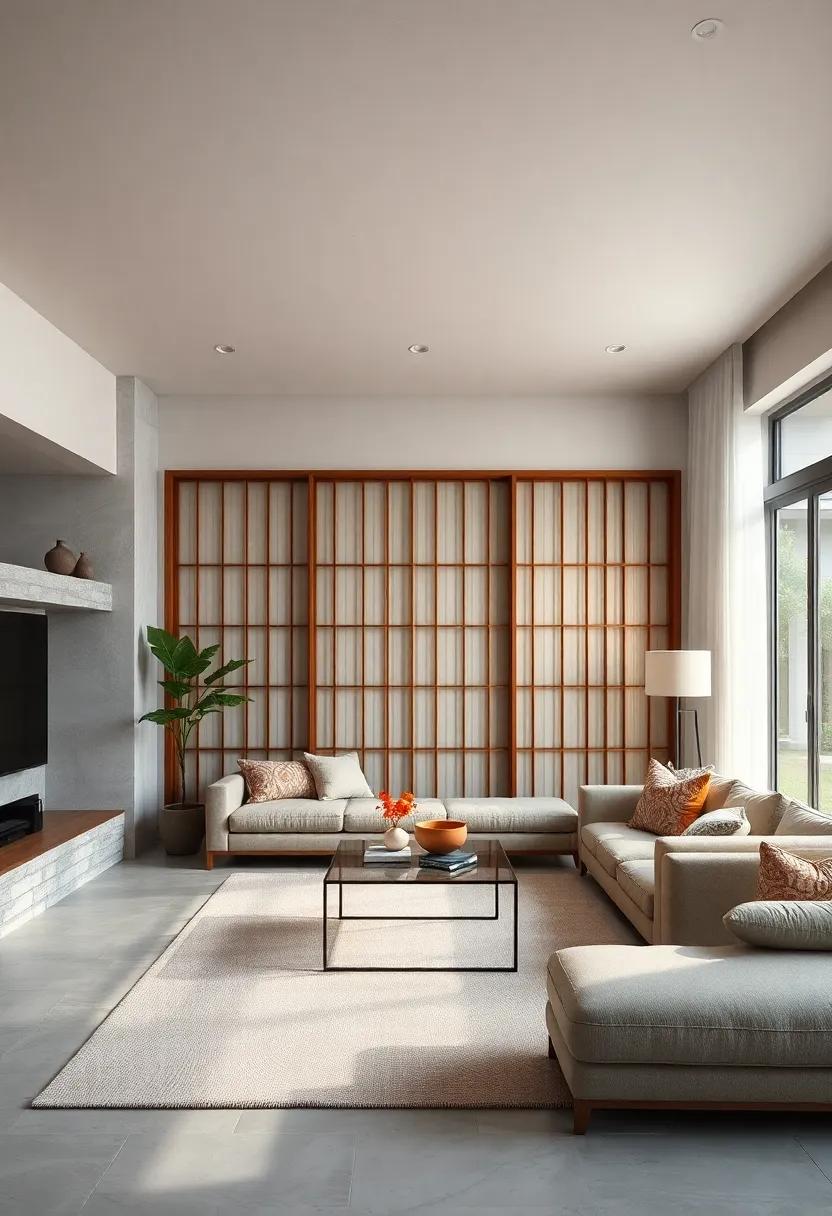
In the world of interior design, versatility is key, and few elements embody this principle as elegantly as Shoji screens. Traditionally crafted from a wooden frame and translucent rice paper, these screens serve not only as effective room dividers but also as stunning decorative pieces that enhance any space. By employing a delicate balance of light and shadow, they can create a serene atmosphere, allowing natural light to filter through while offering privacy when needed.Their minimalist design aligns perfectly with modern aesthetics, rendering them suitable for various settings—from cozy apartments to expansive homes.
When incorporating Shoji screens into your living spaces, consider the following benefits:
- flexible layout: Easily reconfigure your space for gatherings or solitude.
- Natural aesthetics: Introduces organic textures and a soothing color palette.
- Functional artistry: Acts as a canvas for exquisite patterns and natural motifs.
To showcase the versatility of Shoji screens, here’s a simple comparison of styles:
| Style | Features |
|---|---|
| Traditional | Made with classic wood frames and rice paper, often featuring intricate designs. |
| Modern | Sleek lines and minimalist design with alternative materials like acrylic. |
| Customized | Personalized artwork or colors to match specific decor themes. |
Cultural Significance: The Story Behind Traditional Japanese Shoji Screens
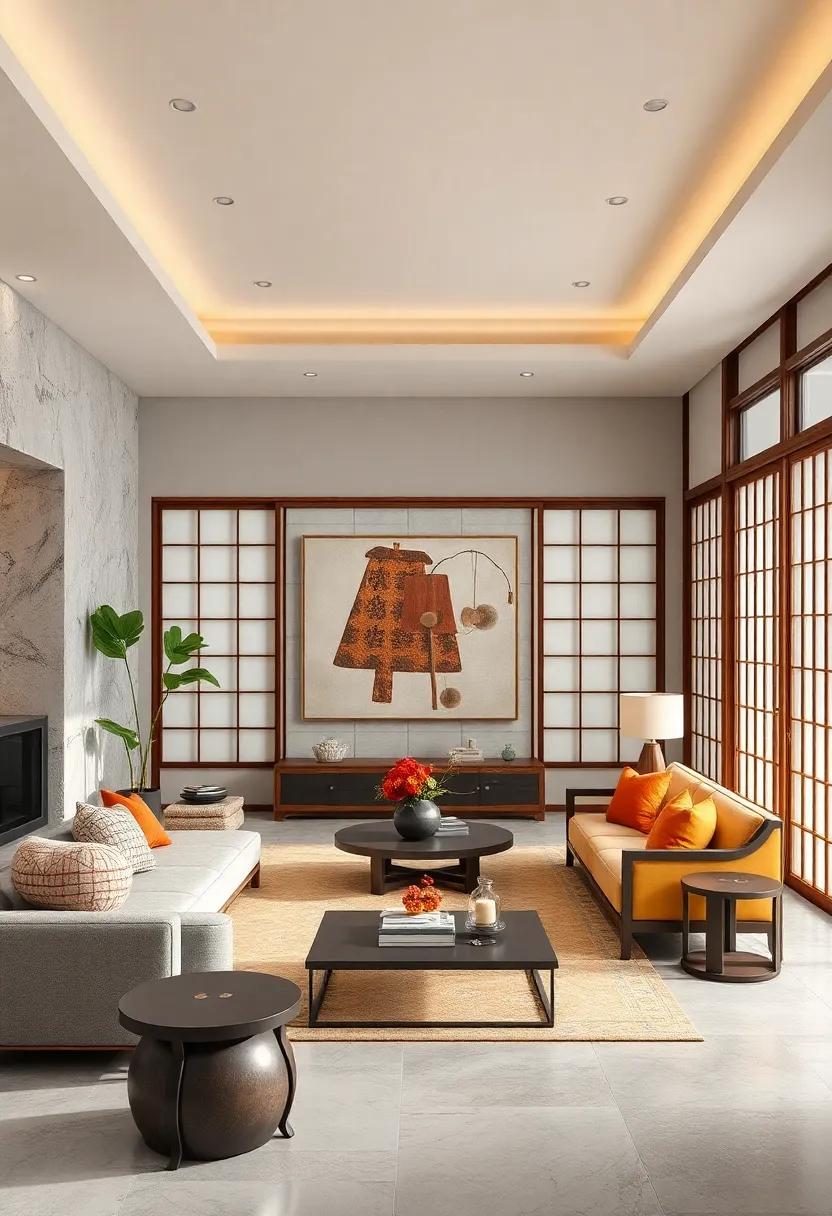
Throughout history, traditional Japanese shoji screens have been more than just practical room dividers; they embody a rich cultural narrative that speaks to the essence of Japanese aesthetics. These beautifully crafted panels, usually made of a wooden frame and translucent rice paper, reflect the Japanese philosophy of harmony and simplicity, known as *wabi-sabi*. Their design facilitates a seamless connection between the indoors and outdoors, allowing natural light to filter through while preserving a sense of privacy. This concept of light and shadow plays a crucial role in Japanese architecture, where the interplay creates an atmosphere of tranquility and contemplation.
beyond aesthetics, shoji screens represent a way of life deeply tied to nature and minimalism. Their use can be traced back to the Heian period (794-1185), when they served as an essential element in traditional Japanese homes, creating flexible living spaces that coudl be easily adapted to different needs. The panels frequently enough feature delicate hand-painted designs that celebrate seasonal motifs, such as cherry blossoms or bamboo, further enhancing their cultural significance. By incorporating shoji screens into modern interiors, one not only embraces their visual elegance but also honors a time-honored tradition that promotes mindfulness and serenity in everyday living.
innovative Materials: Contemporary Shoji Screens for Modern Living
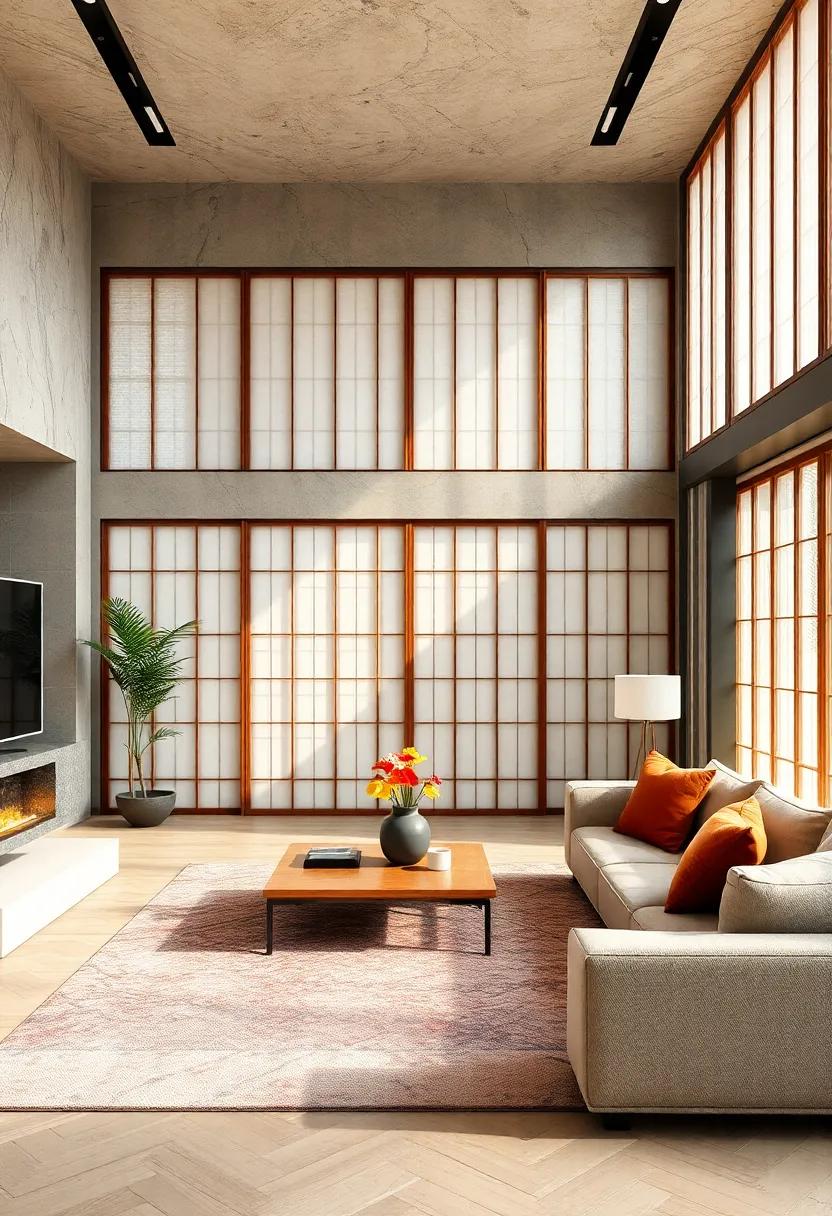
As modern life continues to evolve, so do the materials and designs that enhance our living environments. Contemporary shoji screens are no longer limited to traditional wooden frames and rice paper; today’s iterations embrace a wealth of innovative materials that offer both functionality and aesthetic appeal. These screens may incorporate tempered glass, acrylic, and lightweight composites, allowing for a multitude of designs that are as stunning as they are practical. Their transparent or translucent nature creates a gentle diffusion of light,transforming spaces into serene sanctuaries while still offering the flexibility of separation.
Some noteworthy features of contemporary shoji screens include:
- Customizable Dimensions: Tailored to fit any space, ensuring a seamless integration into your home.
- Eco-Friendly Materials: Sustainable options like bamboo and recycled content are increasingly popular.
- Variety of Designs: From minimalist patterns to intricate motifs, there is a style for every taste.
With the ability to integrate technology,such as smart glass that can change opacity at a touch,modern shoji screens redefine the traditional concept of separation and privacy. This blend of elegance, sustainability, and innovation not only enhances the beauty of contemporary interiors but also caters to the evolving needs of urban living.
Custom Designs: Tailoring Shoji Screens to Match Individual Styles

Crafting the perfect Shoji screen is an art form, and individual styles truly shine when it comes to custom designs. These screens can be tailored not only to fit the dimensions of your space but also to reflect your personal aesthetic, creating a harmonious balance between functionality and beauty. Each screen can incorporate unique features such as:
- Custom Patterns: Choose from intricate geometric shapes or delicate floral motifs that resonate with your décor.
- Personalized Color Palettes: Select hues that complement your existing color scheme, from muted earth tones to vibrant shades.
- various materials: Opt for traditional rice paper or modern alternatives like glass and acrylic for a contemporary twist.
Moreover, bespoke Shoji screens can serve specific purposes—whether it’s creating privacy in an open-concept living area or serving as a stunning room divider without sacrificing light. Here’s a quick comparison of design options to consider:
| Feature | Traditional | Contemporary |
|---|---|---|
| Materials | Rice Paper, Wood | Glass, Acrylic |
| Style | Ornate, Detailed | Minimal, Sleek |
| functionality | Light Diffusion | Visual Separation |
Ultimately, a custom-designed Shoji screen is more than just a decorative element; it’s a reflection of your identity and a vital component of your serene living space. Explore the possibilities and let your creativity guide you in the creation of a screen that encapsulates your unique vision.
Color and Texture: Enhancing Visual Interest with Shoji screens

Incorporating color and texture into your living space can redefine the atmosphere and aesthetics, and Japanese Shoji screens are uniquely suited for this task. these decorative panels traditionally blend functionality with artistry, crafted from thin wooden frames and translucent rice paper. By choosing screens with vibrant hues or intricate patterns, you can create focal points that draw the eye, adding depth and character to your room. Consider the following color options to enhance your decor:
- Soft Whites: For a peaceful ambiance that reflects light beautifully.
- earthy Tones: To bring warmth and a sense of grounding into your space.
- Bold Colors: Such as deep reds or rich blues to make a striking statement.
- Natural Wood Finishes: To connect the indoors with nature.
The texture of Shoji screens also plays a pivotal role in the sensory experience of a room. The varying thickness of the rice paper and the elegant grain of the wood creates a harmony that harkens back to traditional japanese design. Textured screens can filter light in gentle waves, enhancing the serene quality of a space. As you explore different styles, think about the tactile aspect:
| Texture Type | Visual Effect |
|---|---|
| Fine Grain | Creates a smooth, refined look. |
| Coarse Grain | Adds rustic charm and warmth. |
| Patterned Paper | Provides artistic intrigue and variation. |
By consciously selecting color and texture, you can elevate your living space from ordinary to extraordinary, inviting a tranquil atmosphere that invites both relaxation and visual delight.
Fluid Boundaries: The Functionality of Shoji in open-Concept Homes
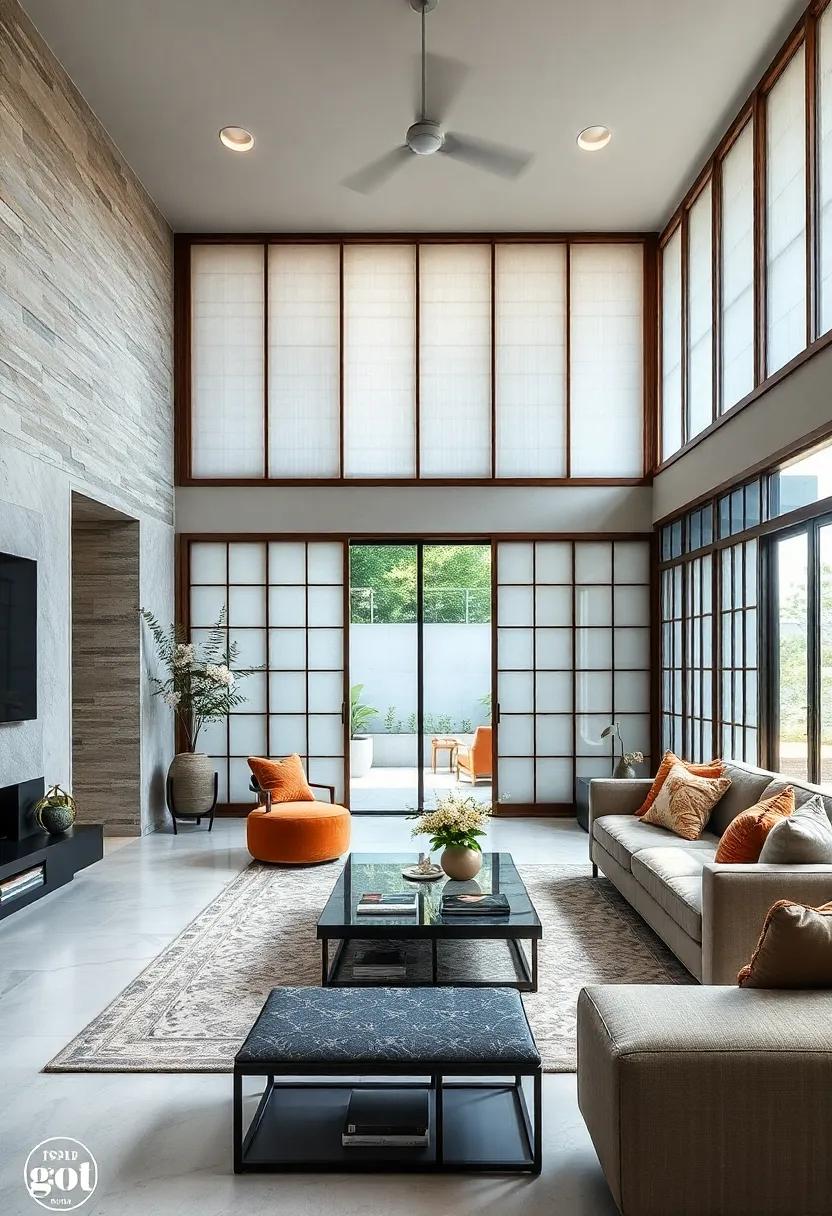
In the realm of open-concept design,where spaces seamlessly intertwine,shoji screens introduce a sense of fluidity and adaptability. These traditional Japanese elements serve as sophisticated dividers, capable of transforming wide expanses into intimate areas with ease. Whether used to obscure a workspace, create a cozy reading nook, or delineate dining areas, the inherent flexibility of shoji allows homeowners to tailor their environments according to their needs and mood. Not to mention,the translucent rice paper panels filter light beautifully,casting a warm,serene glow that enhances the ambiance of modern living spaces.
Integrating shoji into an open layout not only elevates design aesthetics but also promotes versatility. Homeowners can achieve a balance between openness and privacy through the strategic placement of these screens, making shoji a practical choice for multifunctional spaces. Moreover, with an array of design options available—from intricate patterns to minimalist styles—shoji screens can harmonize with various interior themes. Here’s a quick overview of some popular styles:
| Style | Description |
|---|---|
| Traditional | Features intricate latticework and paper panels. |
| Modern | Sleek and simplified designs, frequently enough using glass. |
| minimalist | Clean lines and understated panels enhance airy feel. |
Mindful Decor: Integrating Shoji Screens into Zen-Inspired Spaces

Incorporating Shoji screens into your living space allows for a transformative experience, merging functionality with an elegant aesthetic.These traditional Japanese panels, crafted from lightweight wood and translucent rice paper, serve as versatile partitions that can redefine any area. The subtle play of light filtering through the screens creates a serene ambiance, inviting tranquility into your home. Whether utilized to separate living areas or to create private nooks, the simplicity of Shoji screens fosters a sense of spaciousness and calm.
To harmonize Shoji screens within a Zen-inspired environment,consider the following elements:
- Natural Materials: Pair Shoji screens with wooden furniture and bamboo accents to maintain a cohesive organic feel.
- Earthy Color Palette: Choose soft, muted tones for walls and furnishings that complement the natural hues of the screens.
- Minimalist Decor: Adopt a clutter-free approach to furnishings, allowing the elegance of Shoji screens to take center stage.
- Indoor Plants: Introduce greenery through bonsai or other low-maintenance plants to enhance your space’s connection to nature.
| Benefits of shoji Screens | Ideal Spaces |
|---|---|
| Light diffusion | living Rooms |
| Privacy | Bedrooms |
| flexible Space Division | Offices |
| Aesthetic Appeal | Meditation Areas |
craftsmanship and Heritage: Exploring the Making of Authentic Shoji Screens

Delving into the world of authentic Shoji screens unveils a rich tapestry of artisanal craftsmanship that has been meticulously refined over centuries. The process begins with selecting the finest materials—typically a combination of lightweight wood and delicate rice paper,each chosen for its beauty and functionality. artisans handcraft each frame, ensuring that every joint is precise and every panel reflects a union of tradition and innovation. During the construction, techniques such as joinery and lacquer finishing are employed, requiring immense skill and attention to detail. What sets these screens apart is not only the craftsmanship but also the connection to Japanese heritage, highlighting the respect for nature and the pursuit of harmony in design.
The significance of shoji screens extends beyond their visual appeal; they embody a philosophy that embraces simplicity and functionality. Typically featured in Japanese homes, these elegant dividers can be personalized in various styles, such as:
- Classic White: Timeless appeal, providing airy light diffusion.
- Colored Variations: Add a modern twist, incorporating different hues.
- Artistic Prints: Unique designs that serve as conversation starters.
Moreover, the practice of using Shoji screens transcends mere aesthetics; their lightweight structure allows for easy reconfiguration of spaces, creating a versatile environment that adapts to the users’ needs. This flexibility, coupled with the serene ambiance they evoke, showcases the profound impact authentic Shoji screens can have in transforming any living space into a sanctuary of tranquility.
Seasonal Elegance: Adapting Shoji Screens for Year-Round Aesthetics
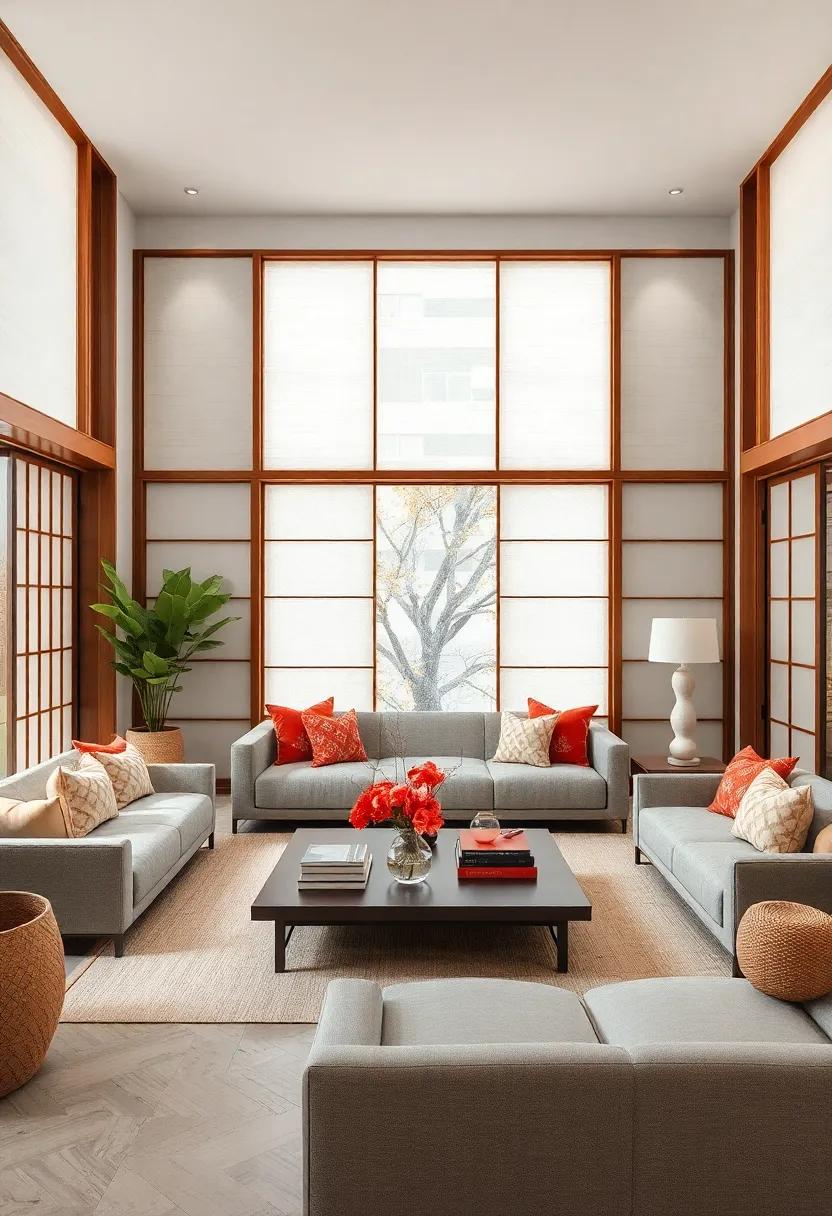
To truly embrace the dynamic beauty of each season, shoji screens can be artfully adapted to reflect the changing aesthetics of nature. In spring, delicate floral patterns can grace the translucent rice paper, inviting the freshness of blooming cherry blossoms indoors.for summer, lighter, airy designs with shades of green can mimic the serene ambiance of a lush garden, while autumn can usher in warm hues of orange and deep red, celebrating the falling leaves. As winter arrives,the use of minimalistic patterns can evoke the serene stillness of snow-covered landscapes,making your living space feel calm and cozy.
The versatility of shoji screens extends beyond mere aesthetics; they also offer functional adaptations to suit seasonal needs. These can include:
- Layering Textures: Incorporating lightweight fabrics for summer and heavier materials for winter.
- Adjustable Panels: Utilizing multiple panels to adjust light and privacy throughout the year.
- Seasonal Art Displays: Framing seasonal artwork or nature-themed prints within the screens.
By thoughtfully changing the decorative elements of your shoji screens, you can create a tranquil yet vibrant atmosphere that mirrors the rhythms of the natural world.
Personal Retreats: Designing Tranquil Spaces with Shoji in Mind
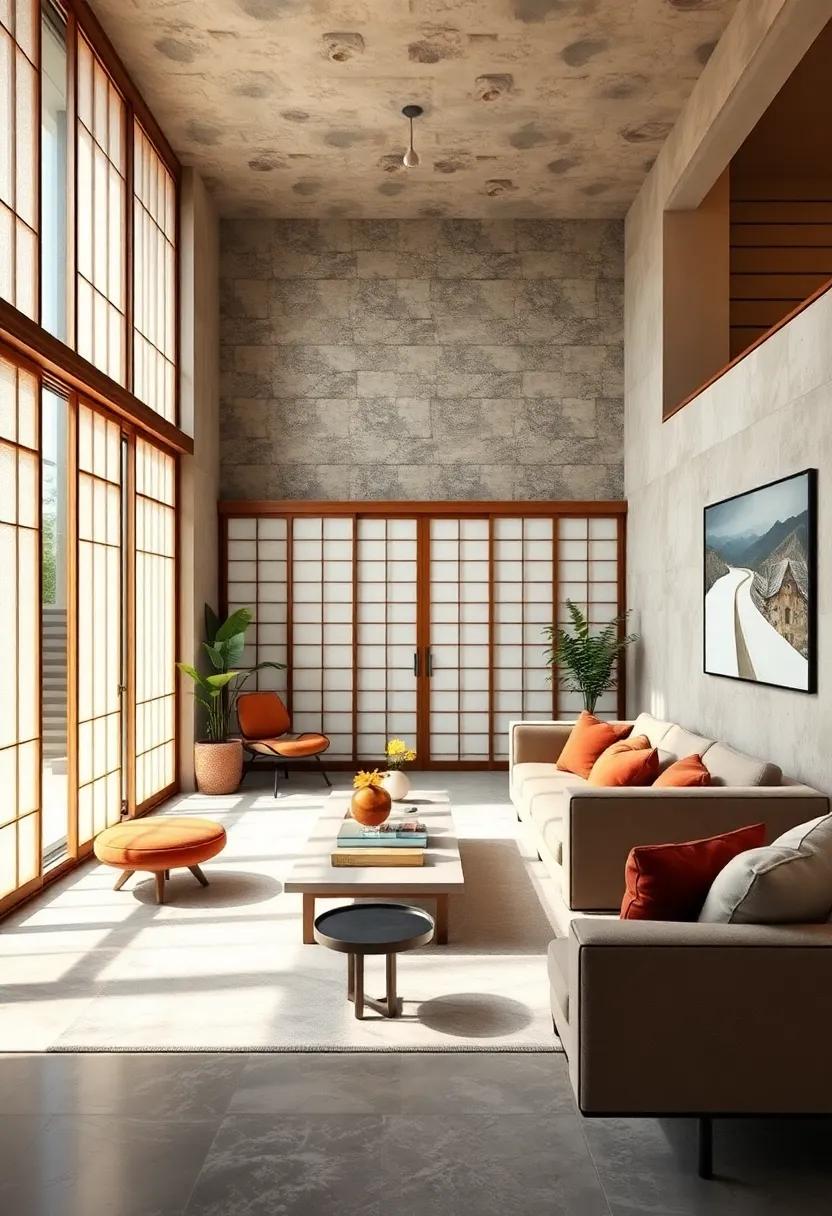
In the journey of crafting personal retreats, the essence of tranquility can be encapsulated through the timeless elegance of Japanese shoji screens. These versatile partitions don’t just serve the purpose of separation; they create a harmonious flow of natural light and bring an organic softness to the surroundings. By incorporating shoji into your space, you can easily transform an ordinary room into a serene oasis. Consider the following elements that enhance the tranquil ambiance:
- Natural Materials: Use wood and rice paper to invoke a sense of authenticity and warmth.
- Soft textures: Integrate cushions and rugs that complement the delicate nature of shoji.
- Zen Elements: Incorporate plants and stones to create a balanced environment.
To truly embrace serenity, it’s essential to curate spaces that invite peace and reflection. Modular shoji screens can be used to create defined areas without the rigidity of traditional walls. Strategic placement can lead to delightful interactions between light and shadow,enhancing the tranquil vibes:
| Screen Type | Benefits | Best Use Areas |
|---|---|---|
| Bi-fold Shoji | Flexible division of space | Living rooms,studios |
| Corner Shoji | Maximizes light flow | Bedrooms,meditation areas |
| Sliding Shoji | Efficient use of space | Closets,home offices |
Balancing Privacy and Openness: The Dual purpose of Shoji Screens
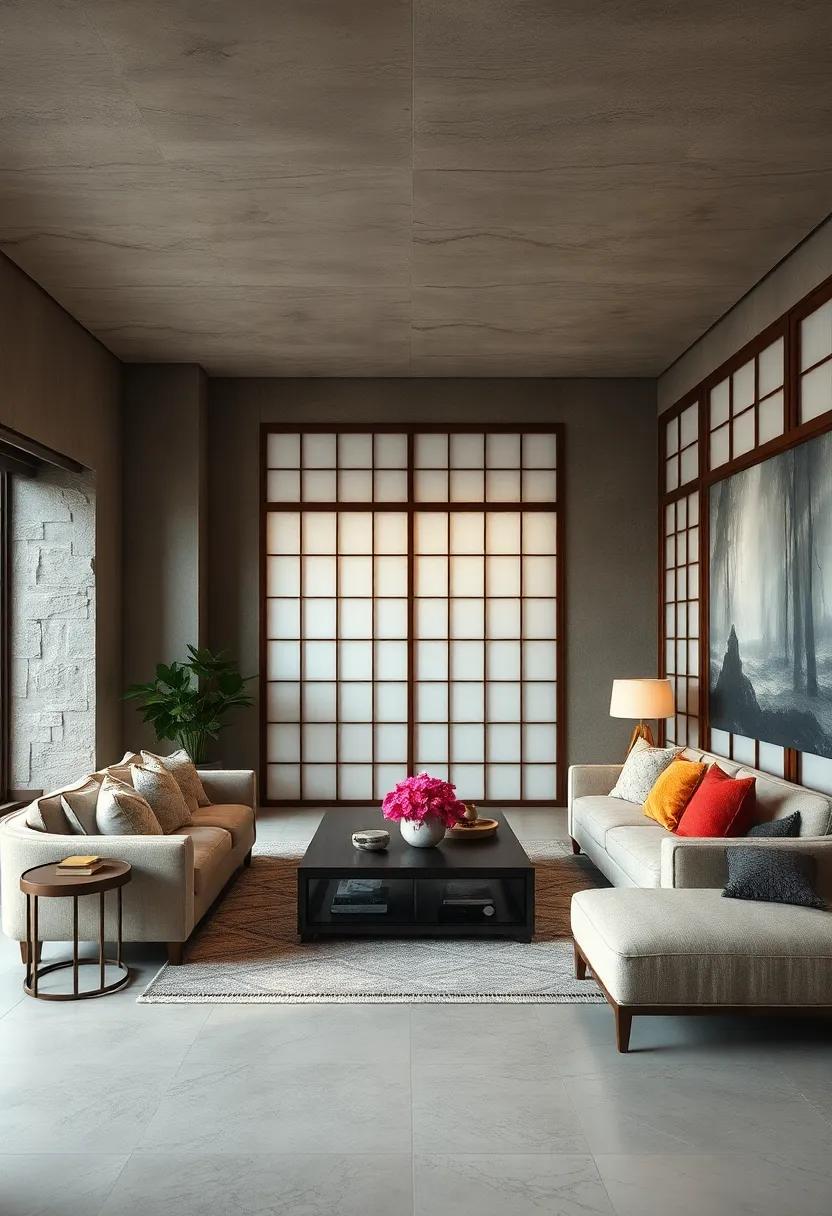
Japanese shoji screens embody the delicate balance between privacy and openness, allowing for versatile living spaces that feel both personal and connected. These elegant sliding panels, made with translucent rice paper and wooden frames, diffuse light while offering a visual barrier between rooms.Their ability to partition spaces without completely isolating them creates an ambiance that promotes tranquility and mindfulness, ideal for modern interiors where adaptability is key. With the gentle, filtered light that shoji screens provide, one can experience a unique interplay of shadows and warmth, transforming an ordinary room into a serene retreat.
In addition to their aesthetic charm, shoji screens serve practical functions, making them an excellent choice for various settings.consider the following benefits:
- flexible Room Division: Create intimate nooks or open up larger spaces effortlessly.
- Natural Light control: Allow ambient light while maintaining a sense of shelter.
- Sound Dampening: Help reduce noise levels between rooms, promoting a peaceful environment.
When seeking to incorporate shoji screens into your living space, consider their placement and purpose in relation to your daily activities. Whether as a stylish way to separate a workspace, or as a backdrop for a calming meditation space, these versatile elements invite a sense of balance into your home while respecting both the need for privacy and the desire for reflected light.
Cohesive Interiors: Incorporating Shoji into various Design Themes
The versatility of Shoji screens allows them to harmoniously fit into a multitude of design themes, each enhancing the inherent beauty of the wood and rice paper craftsmanship. In minimalist spaces, these elegant dividers serve not only as functional barriers but also as simple yet refined art pieces that promote tranquility and uncomplicated living. Their ability to diffuse natural light creates an ethereal ambiance, making them an excellent choice for Zen-inspired interiors where calmness and clarity reign supreme. Similarly, in contemporary designs, Shoji screens can introduce a touch of traditional elegance without overpowering modern aesthetics, allowing for a seamless blend of old and new that invites a sense of balanced sophistication.
Moreover,when incorporating Shoji into eclectic or bohemian themes,they can act as a stunning contrast against colorful textiles and varied patterns. Their neutral tones provide a grounding effect that marries well with vibrant decor, while still giving the space a sense of structure.Whether you’re aiming for a rustic feel with natural wood finishes or a sleek,painted version for a modern look,these screens can adapt to various palettes and textures. The use of Shoji not only enhances the visual narrative of a room but also promotes functionality,allowing for redefined living spaces that embrace both beauty and purpose.
Eclectic combinations: Merging Traditional Shoji with Modern Elements
Incorporating traditional Shoji screens into contemporary interiors creates a harmonious blend that celebrates both history and innovation. These elegant panels, made from lightweight wood frames and translucent paper, serve as more than just room dividers; they are artistic statements. By pairing them with modern furnishings, you can achieve a serene balance that enhances the overall aesthetic. Imagine a shining, minimalist room where the softness of Shoji screens contrasts with sleek furniture and bold, geometric decor. This juxtaposition allows you to maintain an uncluttered look while infusing warmth and cultural richness.
To maximize the visual impact of Shoji screens within modern contexts,consider these dynamic combinations:
- Color Palette: Choose neutral tones for the walls and large furniture pieces while adding pops of color through decorative pillows and art.
- Natural Elements: Incorporate plants and natural materials, such as wood and stone, to enhance the organic feel that Shoji screens bring to the space.
- Lighting Fixtures: Pair traditional screens with contemporary light fixtures, like pendant lights or LED strips, to create a layered lighting effect that elevates the mood.
create a striking contrast with a table showcasing various Shoji screen styles alongside modern design elements:
| Style | Description |
|---|---|
| Traditional Shoji | Crafted with washi paper and intricate woodwork, ideal for authentic Japanese ambiance. |
| Modern minimalist | Simplistic design focusing on clean lines and neutral colors, perfect for contemporary homes. |
Shoji in Small spaces: Maximizing functionality While Maintaining Serenity
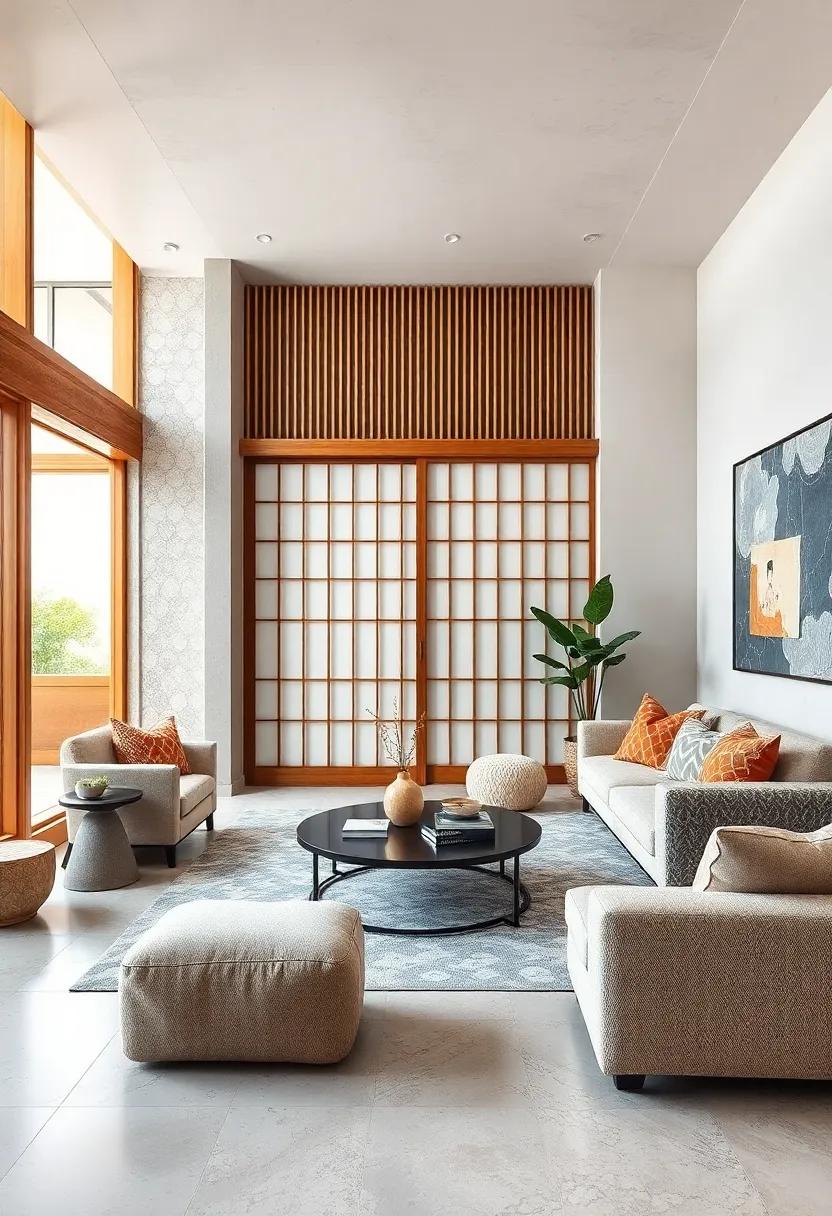
When space is at a premium, traditional sliding shoals can work wonders. These elegant screens not only serve as functional room dividers but also enhance the aesthetic appeal of a room, creating a tranquil environment that promotes focus and relaxation. Their lightweight design allows them to be easily moved or reconfigured to adapt to different activities throughout the day, whether it’s converting a living area into a workspace or creating a quiet nook for meditation. Consider incorporating shoji screens in the following ways:
- Partitioning Living Spaces: Use shoji to split larger rooms into cozy, distinct areas without sacrificing light.
- Window Treatments: Hang them in front of windows to soften sunlight while maintaining privacy and airflow.
- Closet Doors: Replace conventional doors with shoji to introduce a sense of calm and elegance when entering storage areas.
Incorporating shoji screens into small areas can harmonize functionality with aesthetic appeal.The delicate lattice work and translucent paper of these screens create an illusion of spaciousness,making a room feel airy and open. For instance, using double-layered screens can provide a subtle separation for bedrooms or study spaces while filtering light in an ethereal manner. To illustrate the impact of shoji on small living areas, consider the functionality of a table that highlights versatile configurations:
| Configuration | Functionality | Benefits |
|---|---|---|
| Open Layout | Room feels larger | Maximizes natural light |
| Corner Division | Creates a reading nook | enhances privacy |
| Flexible Home Office | Converts living area | Promotes productivity |
Architectural Wonders: The Influence of Shoji screens on Contemporary Structures

In recent years, the elegant simplicity of Shoji screens has captivated contemporary architects and designers, leading to a revival of their use in modern living spaces.These traditional Japanese sliding panels not only serve as functional room dividers but also blend seamlessly into a variety of architectural styles. The lightweight frames, often crafted from wood and adorned with translucent rice paper, create an ethereal quality that enhances natural light while maintaining privacy. As a result, contemporary interiors are transformed into tranquil sanctuaries where fluidity and openness reign.
The influence of Shoji screens extends beyond aesthetics; they inspire sustainable design practices that prioritize harmony between indoor and outdoor environments. By incorporating Shoji-inspired elements, architects can achieve the delicate balance of visibility and seclusion that fosters a sense of peace in urban settings. Key features that illustrate this influence include:
- Natural Light Optimization: Maximizing daylight penetration without compromising privacy.
- Sustainable Materials: Utilizing eco-friendly components in Screen construction.
- Flexible Spaces: Creating adaptable areas that cater to both social interactions and quiet moments.
As a testament to their enduring appeal,many renowned structures now feature Shoji-inspired designs,allowing contemporary architecture to echo the timeless principles of Japanese aesthetics. This resurgence encapsulates the essence of mindful living,where serenity,functionality,and beauty coexist harmoniously.
In Retrospect
As we draw the curtains on our exploration of shoji screens, it becomes evident that these elegant, traditional elements offer more than mere aesthetics; they serve as a bridge between the chaos of daily life and the tranquility that resides within us all. By incorporating shoji screens into our living spaces, we invite not only a graceful fusion of light and shadow but also a sense of harmony that encourages mindfulness and serenity.
Whether you choose to place them in a bustling city apartment or a serene countryside home, these versatile screens can transform any environment into a sanctuary of peace. As we embrace the delicate artistry of japanese design, let us also embrace the profound impact it can have on our mental well-being. May the soft, sliding panels of shoji invite you to pause, reflect, and savor the stillness within your own space, allowing you to cultivate a lifestyle steeped in elegance and tranquility. With each gentle slide of the screen, may you find not just a physical separation but a pathway to serenity in your everyday life.
As an Amazon Associate I earn from qualifying purchases.

